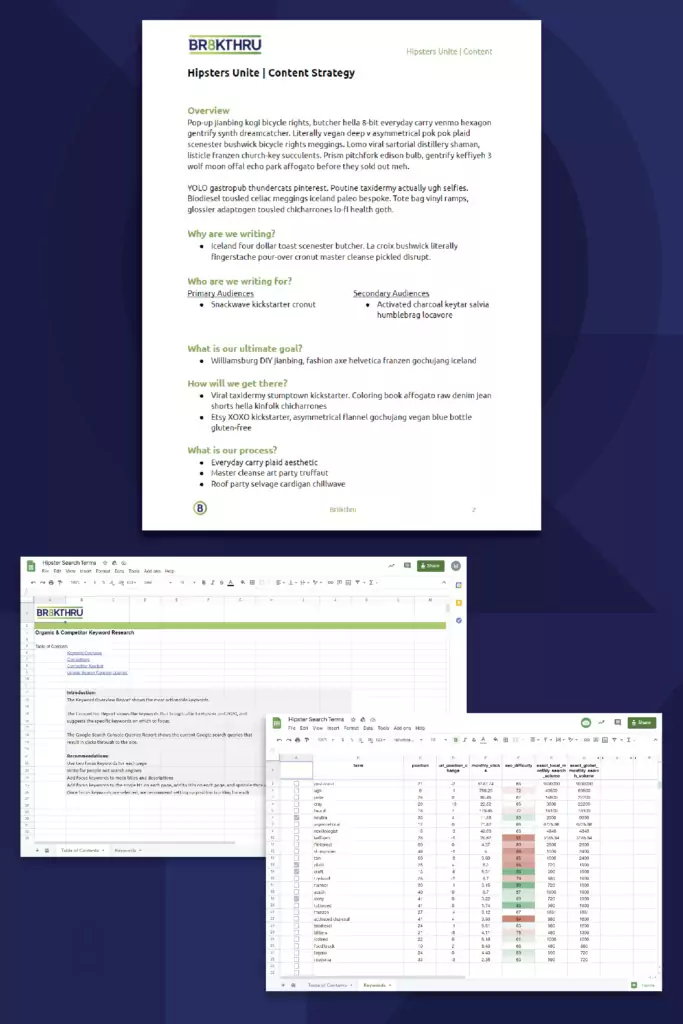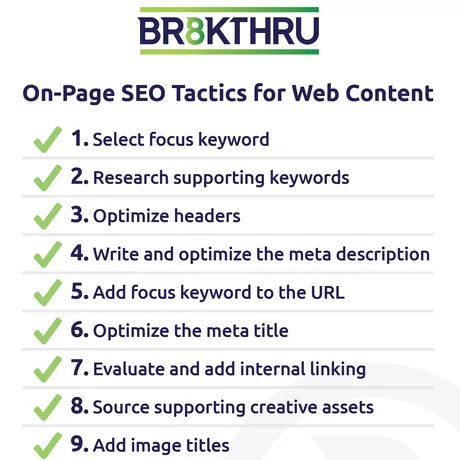Insights
Whether you’re in the midst of a website redesign, or simply need to improve the effectiveness of your content, you need to write copy that works on multiple levels. Successful web copy takes into account these areas:
✔️ Who are your ideal clients
✔️ What is the goal of your website
✔️ What do your clients need to move through their buyer’s journey
✔️ Why should people choose you over competitors
✔️ How can you attract more of the right visitors to your website
When you incorporate the above considerations throughout the content on every page, your website will be positioned to help your business do better.
Table of Contents
- Compile Research & Create A Web Content Strategy
- Write Web Content for Prospects, Not for Yourself
- Incorporate On-Page SEO in Web Content
Compile Research & Create a Web Content Strategy
The best website plans are rooted in strategy. The below research is helpful for creating a website content strategy that addresses the Who, What, Why, and How mentioned above. When we root a website redesign in a research-based strategy, it means fewer costly overhauls in years to come. In short, spending time and money upfront can not only save you money in the future, it can better position your business to achieve new successes.
 Sitemap
Sitemap
A sitemap shows the structure of your website (whether existing or redesign) – what pages go where. If you are doing a redesign, your new sitemap should be the culmination of research rather than the starting point for your redesign efforts. The sitemap is the infrastructure, showing you where each page will live on the website. It can also be handy to help keep track of the pages that you need to write.
Personas
Personas comprise your company’s target audiences. Thinking of the ideal person who will visit a page helps aim the content and tone of web copy to that persona.
Keyword Research
Keyword research shows us the most beneficial focus for web pages based on what people search for online. Websites that are optimized for topics and backed with keywords tend to do better in Google search results.
Content Strategy
Given your understanding of your personas and the goals of the website, create a content strategy that aligns each page of the website with the visitor’s needs. This should help guide the content development for each page. Consider not just what you will put on the page, but the distribution activities you will use to support the finished content.
Once you have reviewed your research and content strategy, you’re ready to dive into writing your web content.
Write Web Content for Prospects, Not for Yourself
Take a moment to think about what your customers need to know about you and your products/solutions before they make a buying decision. They need to know what your company does, the pain points solved, and why you do it better than anyone else. This is called your unique value proposition.
For example, one of Br8kthru’s value props is that we bring Michelin-Star service to agency/client partnerships. You’ll see this not only written on our website but you’ll feel it throughout interactions with us and our brand.
These five tips for writing web content will set your team on the right track for tone and messaging.
Always State Your Value Prop—for EVERY Page
Determine what issue you’re solving for on every page. Briefly explain what differentiates your solution and makes it better. What’s the WHY? What’s the HOW?
Consider Tone
Get strategic about how you want your audience to feel when browsing your website. Today most people want to be engaged in a human-to-human fashion. That means warm, jargon-free, conversational language is usually the best.
Solve Problems
It’s human nature to avoid pain, frustration, and worrying. Practice concise explanations of common problems and how your company solves for them. For example, Br8kthru’s strategists specialize in working with clients who have complex customer journeys.
Use Familiar Language
Write in your persona’s vernacular, not yours. Your techno-speak may not be their techno-speak. Write in a way that your best prospects understand without having to think. Yes, without having to think.
Meet People Where They Are
For each page, consider where you want to meet your persona. Are they in the awareness, consideration, or decision-making stage, given the context of the page? Prospects landed on your web page for a reason. Web content should quickly and clearly answer questions that prospects have.
So how do you actually write web content? Think short; think soundbites.
You’ve got a lot of important things to get across. You need to highlight your offerings, show why you are the best choice, build trust that you are the expert/authority in your space, and more.
Economy of words is important, as time is short and patience is shorter. Readers get tired of long blocks of text. When you write, consider how your text will be broken up into blocks. People are much more likely to read several short blocks of text, as opposed to that long paragraph from War and Peace.
Most site visitors will scan quickly down a page until they find what they are looking for. When you write, consider using headers, bullet lists, and numbered lists.
Writing concise copy can often prove difficult on your first draft. That’s OK—editing is where you hone your message and cut what isn’t essential.
Incorporate On-Page SEO in Web Content
For your visitor to find your page via organic search, you need to set each page up for success with the following on-page SEO elements:
 Focus Keywords
Focus Keywords
One or two keywords for which you’d like the webpage to rank. Sprinkle a handful of these throughout your page copy.
H1 and H2 Header Tags
HTML tags that search engines use to understand what’s important on a page. Make sure your focus keyword is used in these header tags.
Internal Linking
Hyperlink from descriptive text to internal web pages with related content. This helps Google know what pages are important.
Meta Title
Otherwise known as the page title. Descriptive text plus a keyword in the meta title is helpful for both the visitor and search engines
Meta Description
This is the description that shows under a URL in search results. Entice the reader, describe the value they’ll receive, and include the focus keyword(s)
If you give your website copy the attention to detail it needs to be successful, you’ll be rewarded with the ultimate prize: a website that converts!